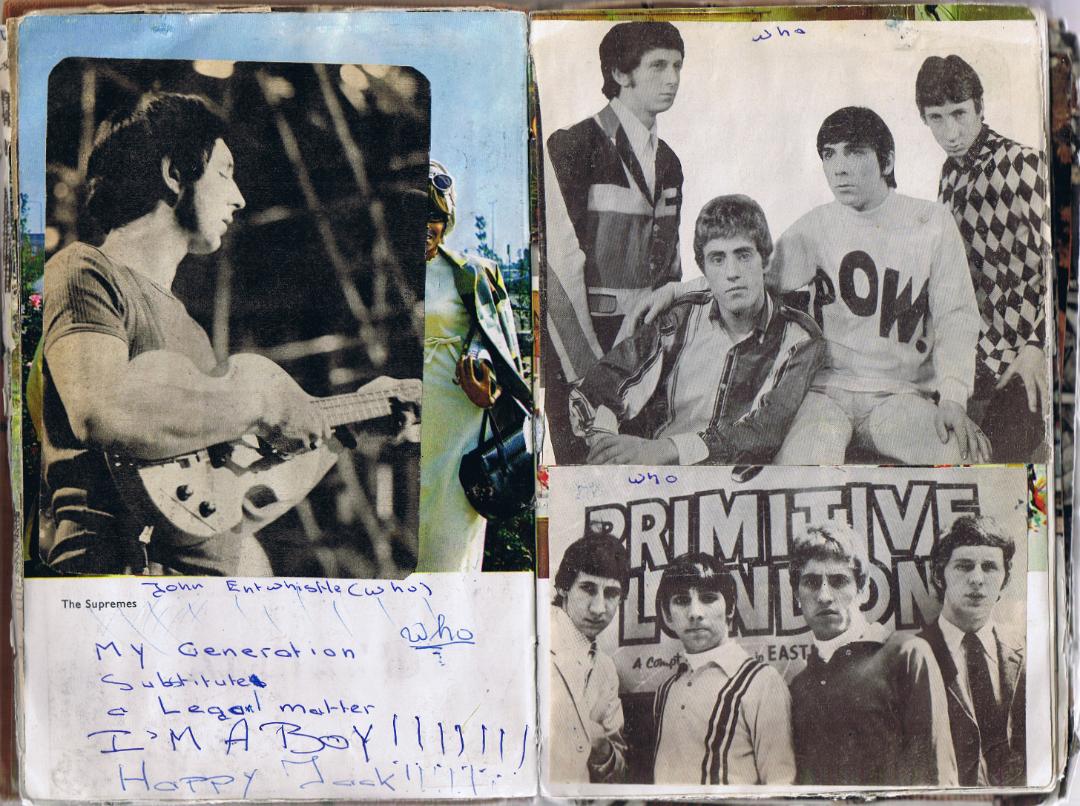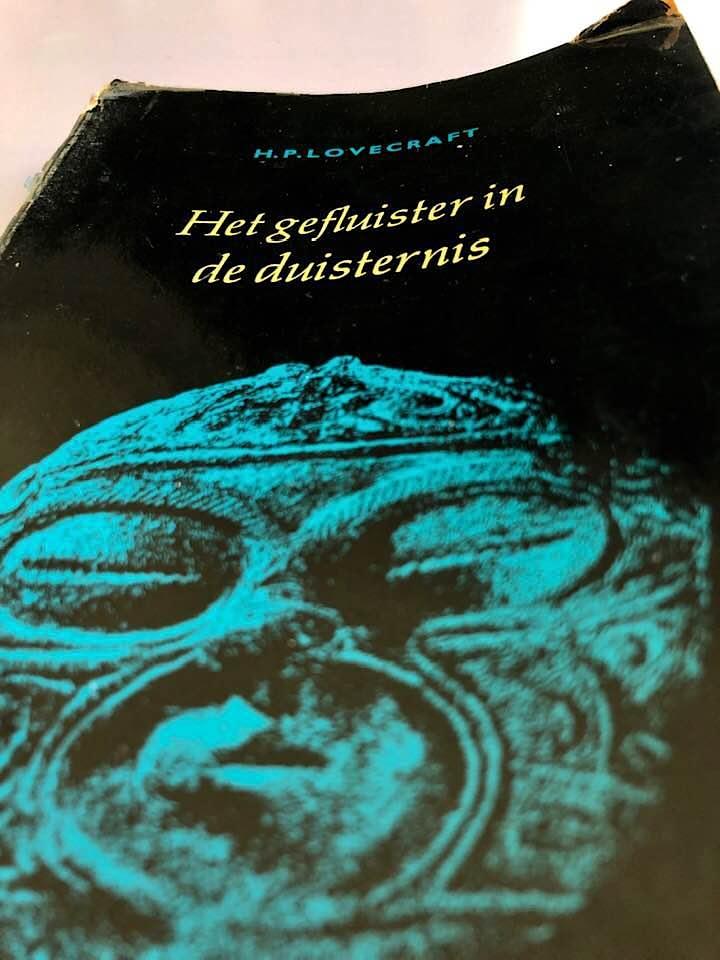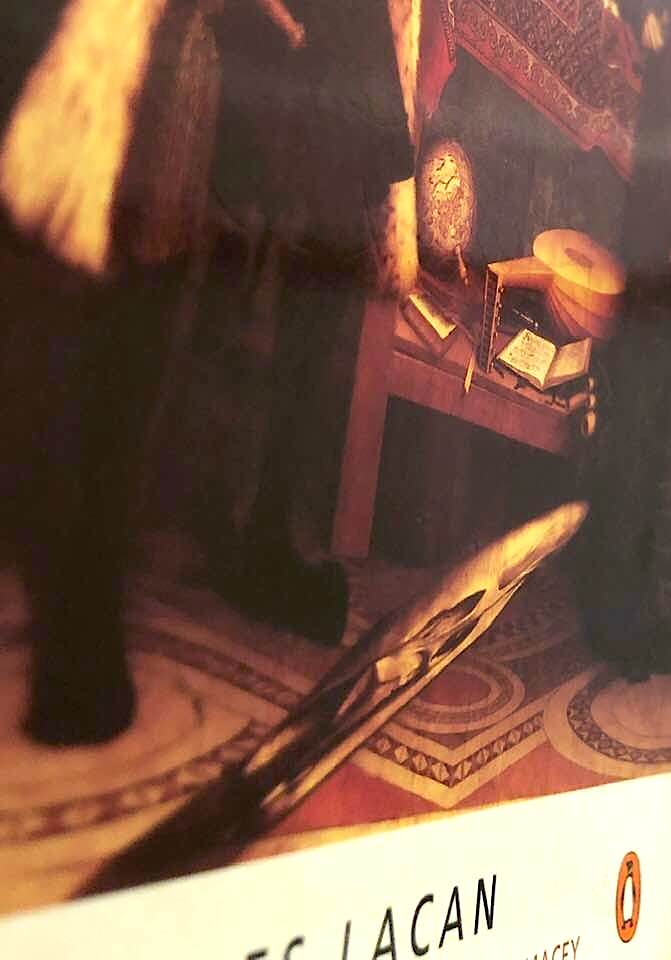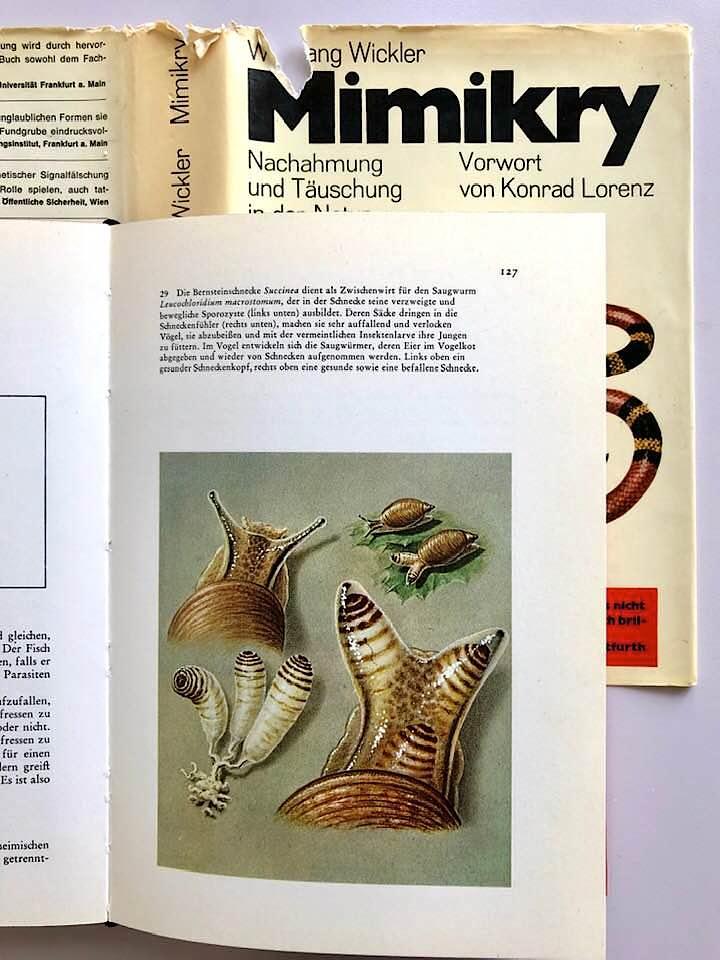I’ve never been much of a collector. I prefer to travel light. Besides, most of the books that turned out important to me as a student or artist were library books, borrowed for lack of money to buy copies of my own. Other important books belonged to friends, or were lent to friends and never returned and yet others were donated to a charity bookshop when I moved house a couple of years ago. In this short list I have limited myself to those books that have been in my possession for a long time and have somehow survived the ravages of time. –Ben Schot
1 Ryam school diary 1966-67
This publication didn’t so much inspire me as provoke me to vandalize it. Ryam school diaries tried to appeal to secondary school kids with pictures of bands and movie stars in the 1960s, but we thought they were downright corny. And ugly. We hated them. So what kids our age did all over The Netherlands, was cut pictures of their favorite bands from music magazines and paste those over the pictures in our diaries. Page after page. As many as possible. A friend of mine, Frank Verhage, had started the craze in our first form and I followed suit. Frank was a cool and lovable guy, a real music buff: well-informed about the latest releases and subscribed to more than one music magazine. As a result, his personalized diary had grown so fat by the middle of the school year that it exploded. Stuffed with pictures of The Who, The Beatles, The Stones, Pink Floyd, Q65, The Monkees, The Small Faces and many others, mine burst at the seams not long after. For some reason I kept this school diary all the time and when I took up publishing many years later, I liked to think of this keepsake from 1966-67 as the first book I put together. I only parted with it when it was included in the city archives of the town where I grew up a couple of years ago. As a document of the 1960s. Ha, how about that, Frank? That must have cracked you up in rock & roll Valhalla like your own school diary did more than fifty years ago.
———-
2 H.P. Lovecraft – Het Gefluister in de Duisternis
The ownership signature and date that I left on the first page of this book say 26 July 1969. I was 15 at the time and having a summer holiday. I don’t remember buying this particular book but it must have been in one of the touristy shops under the dunes of the isle of Schouwen-Duiveland, where my parents spent each summer in a trailer. The Lovecraft compilation ‘Het Gefluister in de Duisternis’ had been published the previous year as one of the ‘Zwarte Beertjes’, a series of cheap Dutch paperbacks published by Bruna, Utrecht. The books were very popular and ranged from Ian Fleming novels and Georges Simenon detectives to science fiction by Moorcock and Asimov, and compilations of Edgar Allan Poe tales. All in Dutch. I must have read dozens of them in the 1960s and early 1970s. I don’t remember much of the Lovecraft tales of ‘Het Gefluister in de Duisternis’ themselves but I do recall the fear they sparked. My nerves were on edge the summer of 1969 anyhow. It was a period of violent conflicts at home. Of love and friendships lost. Of an inevitable breakdown. In the daytime I wandered across the dune region and hung out at an amusement hall, at night I hardly slept at all. Yes, Lovecraft’s book sparked impalpable fears of the supernatural but the horrors were very real that summer. Cthulhu = pussy.
———–
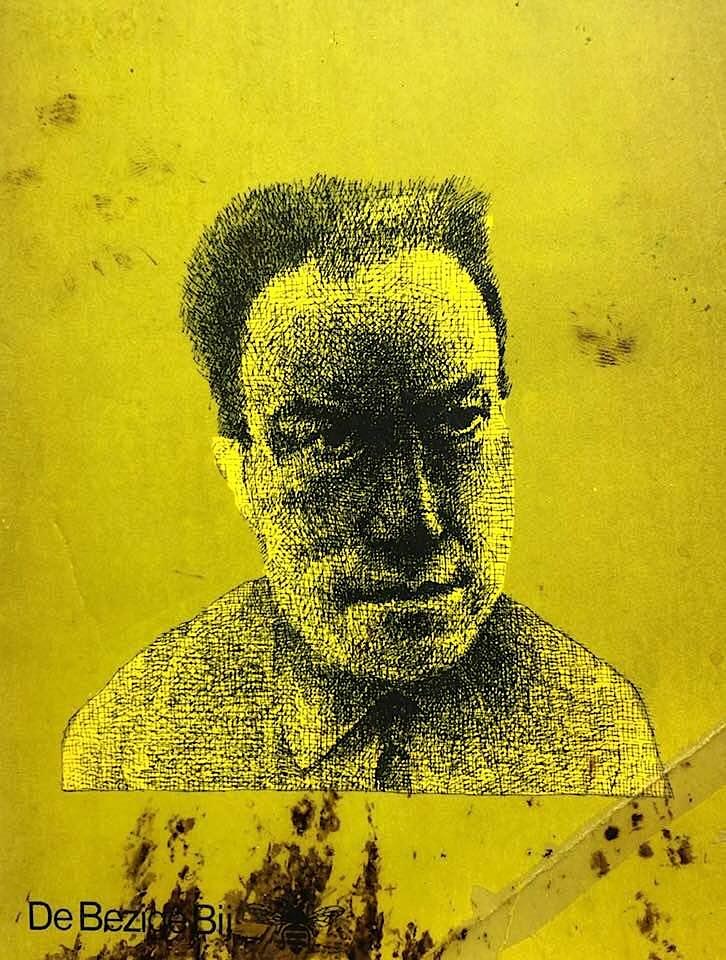
3. Albert Camus – Dagboek
The first time I read an Albert Camus book was in café ‘De Vlinder’ in the country town of Zierikzee in the early 1970s. ‘De Vlinder’ (The Butterfly) was a countercultural café run by Bob and Mimi de Rooij, a married couple from Rotterdam, and was home to socialists, pacifists, artists, musicians and local freaks like me for a couple of years. Camus’s ‘Myth of Sisyphus’ was on the reading table of that café, next to ‘underground’ magazines such as ‘Aloha’ and ‘Suck’, the first European sex paper. A powerful brew for a kid my age. ‘The Myth of Sisyphus’ inspired me to buy other books by Camus from one of the bookshops in town: Dutch translations of ‘L’Exil et le Royaume’, ‘L’Homme revolté’, ‘L’Étranger’, ‘La Chute’ and ‘Carnets’, a selection of journal notes from the period 1935-1951. The ownership signature and date in the latter mention 1974 as the year of purchase. That was the year ‘De Vlinder’ changed hands, never to return as a countercultural café, and I was at home, studying English language and literature while awaiting the outcome of the procedure that pacifist conscientious objectors to military service had to go through in those days. I internalized Camus’s concepts of exile and rejecting nihilism in that period and cherished the fragmentary notes in his ‘Dagboek’ like crumbs of bread leading me out of the woods of alienation: ’The red light district is called “Truth Street” here. The rate is three francs’. I kept my copy of Camus’s ‘Dagboek’ ever since, took it on journeys sometimes and kept it at hand in my first studio in the early 1980s. It was there that it got stained by the tar that I used in drawings and collages at the time. Tar, the smell of which reminded me of the quay in Zierikzee where I used to live when I bought the book and the black water of the harbour was teeming with nihilist sirens at night.
———–
4. Jacques Lacan – The Four Fundamental Concepts of Psycho-Analysis
During the period in the 1970s that I was doing English language and literature at home and awaiting the outcome of the procedure for conscientious objectors, I studied works by Freud and Nietzsche alongside those by Albert Camus. The Nietzsche-Freud-Camus triangle proved fruitful for me as an artist and has lost none of its power since. Years later, after I had finished art school, I bought a paperback edition of Jacques Lacan’s ‘Four Fundamental Concepts of Psycho-Analysis’, but apart from the section where the eye and the gaze are discussed, the contents of the book remained obscure to me. I believe in psychoanalysis as a means of laying bare the inner workings of our psyche and culture, but most of Lacan’s work is beyond my reach. Still, I kept the book. And yes, every now and then I look up a thing or two in it. But each time I reach for the book I can’t help thinking that Lacan’s theories are outdone and outsmarted by the reproduction of Hans Holbein The Younger’s ‘Ambassadors’ on the cover. ‘The Ambassadors’, with its skull painted in anamorphic perspective in the foreground as a subtle and fleeting ‘memento mori’. A skull visible only to passers-by and invisible to those focusing on the noblemen and their riches in the painting. Death, as Lacan tells us in so many words, truly is King.
———–
5. Wolfgang Wickler – Mimikry
In his ‘Four Fundamental Concepts of Psycho-Analysis’ Lacan compares art to mimicry in nature. If I remember correctly, Lacan states that the biological function of mimicry in nature, in which one species imitates another, can be summed up as either ‘camouflage’, ‘intimidation’, ‘travesty’, or combinations of those. I thought that was a fascinating concept, worth looking into and possibly worth exploring in my own work. After having put Lacan aside in the mid-1990s, I bought an antiquarian copy of zoologist Wolfgang Wickler’s ‘Mimikry’ (first published in 1968) and believe I devoured the book in a single night. Insects with false heads on their hind parts, a praying mantis that looks like a flower, male bees that are more attracted to the fake female bees that some orchids present to view than real females, cuckoo eggs that surreptitiously fool their hosts… mind-blowing stuff. One of the cases of mimicry described by Wickler drew my attention in particular and when I found out that a VHS tape of this phenomenon could be ordered from a scientific institute in Göttingen, Germany, I bought a copy and subsequently screened it during a talk about my work in one of Rotterdam’s art institutes. The video showed how a parasite, a worm, that lives in the intestines of birds follows an unusual cycle of asexual reproduction. Once the eggs of the worm have been defecated by the bird, some of them are consumed on the ground by snails that feed on bird shit. Inside those snails’ bodies the eggs develop into sporocysts, sacks of larvae, which work their way up to the snails’ eye-stalks. And once there, the sacks start pulsating and look so much like live worms that the eye-stalks are often snapped off and eaten by predatory birds. Inside the digestive systems of those birds the cycle starts all over again. It’s a cruel and perverse universe. And art, sweet art, can only lick Mother Nature’s boots.
Ben Schot is an artist, English professor, bookmaker, publisher and distributor of Sea Urchin Editions, based in Rotterdam, The Netherlands.

